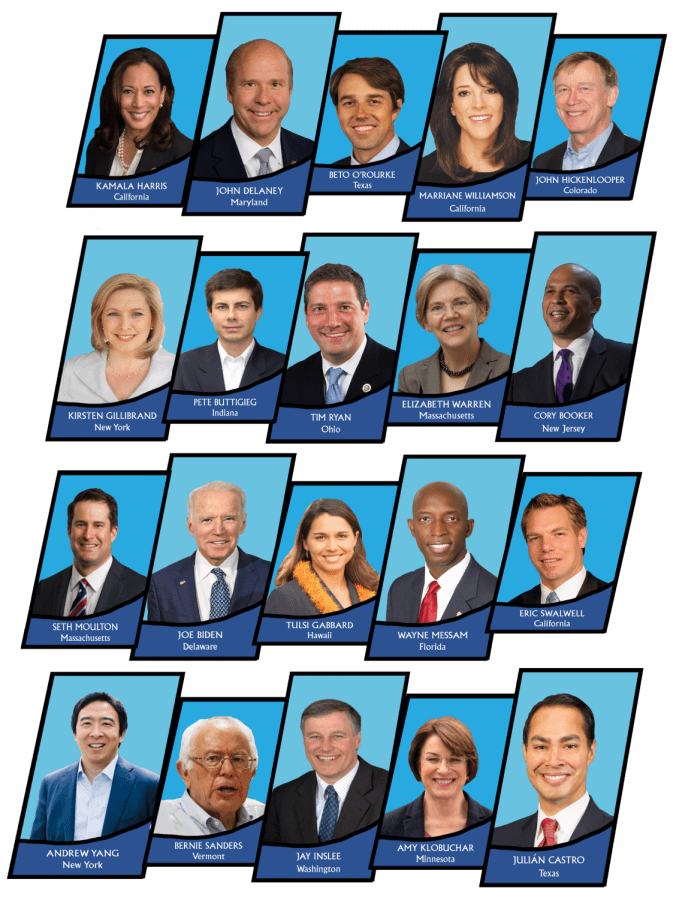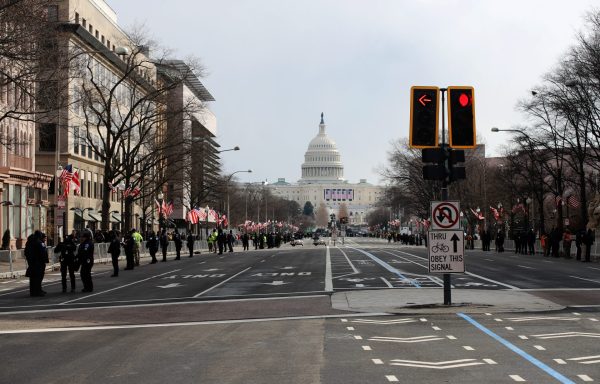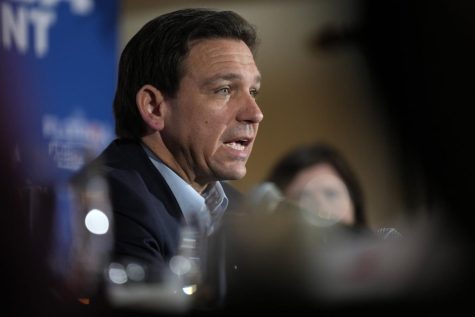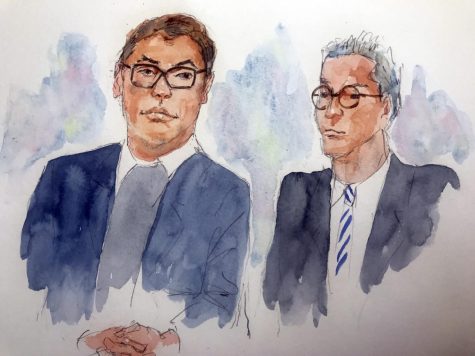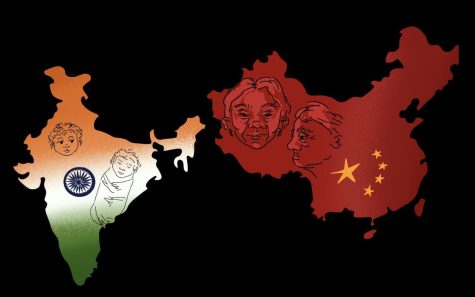And then there were 20
The 2020 Democratic presidential race has already begun and the selection field is up to 20, with more likely to join in ahead of next year’s state primaries.
There is a long road until the election a year and a half from now and candidates are on the move to make the short list.
Ben Fisher, a contributing writer at the Jerusalem Post, said he doesn’t think the large number of Democratic primary candidates is an issue.
“A large group of candidates vying in the primaries is the sign of a healthy democracy,” he said.
It is not unusual to have many candidates jump in the race early on. The declaration can be strategic to give politicians national visibility for their aspirations later on.
“Democrats think Trump is vulnerable, so that encourages all those candidates who have ambitions of being President to run,” said Erik Tillman, a DePaul political science professor.
Democrats are almost entirely united in their disdain for Trump. His presidency has urged many candidates to call for unity ahead of the Milwaukee convention in 2020. Craig Sautter, a DePaul professor in the School of New Learning and cofounder of political media and strategy firm Sautter Communications, said the large pool of candidates “helps showcase party talent in Congress, in Statehouses, even in cities around the nation.”
In the presidential primary, Sautter sees three subgroups.
“We see members of the old guard going after the prize they couldn’t win in the past; the next generation of leadership jockeying for power and recognition and hopefully a vice presidential slot; and the political newcomers to the national stage all out campaigning in Iowa and New Hampshire and on national TV via interviews.”
There are likely to be more candidates throwing their hat in the ring before the first Democratic National Convention debates in June.
Current candidates are already clawing over funding to continue their campaigns during the primary; the Democratic National Committee has put a fundraising and public poll minimum for participation in those debates.
As for campaign strategies, many of the candidates are employing similar anti-Trump rhetoric.
“[Democrats] still seem to be harping on the same points that they did before the report …This reinforces some persuadable Independents that the Democrats may be delusional,” Sautter said.
Democratic presidential nominee Hillary Clinton often received criticism during the 2016 election for being locked into anti-Trump rhetoric.
“The people who definitely will vote against President Trump are already persuaded,” Sautter said. “I fail to see the strategic vision of current 24/7 anti-Trump Democrats. What is done is done. He won the election, and Democrats cannot change that.”
One candidate breaking from this tack is South Bend, Indiana Mayor Pete Buttigieg, who surged in March while touting an issue-focused campaign that avoids anti-Trump language. Buttigieg is hoping to appeal to independent voters who flipped in the 2016 election.
“[Independents] are the ones who sway an election one way or the other, since the other two sides are fairly evenly divided,” said Sautter.
While some Democrats are attempting to beat Trump by fighting fire with fire, others are trying to draw a circle that encompasses a wide swathe of voters.
“A debate between those who want to push the party further to the left versus those who want to maintain a more moderate platform will be central during the primary campaign,” Tillman said. “Both sides will argue that their strategy is the best for defeating Trump.”
With the wide variety of presidential candidates on tap for 2020, some are concerned about polarization within the Democratic Party.
But Fisher argued that new members of Congress like Minnesota’s Ilhan Omar and Michigan’s Rashida Tlaib are polarizing the Democratic Party more than those running for president.
The political landscape is subject to change, and reflection on past elections shows that many variables come into play. Then-Sen. Barack Obama polled behind Hillary Clinton for months before the August 2008 Democratic National Convention, after which he surged to take the presidency.
“I tend to think who the nominee is, and what specific policies he or she proposes, matters less than most people think,” Tillman said. “Instead, the state of the economy in 2020 — or, more broadly, voters’ sense that things are on the right track in the U.S. — and President Trump’s approval rating will have much more effect.”
Regardless of who the Democrats nominate to go up against Trump, it is likely to be a bitter fight.


